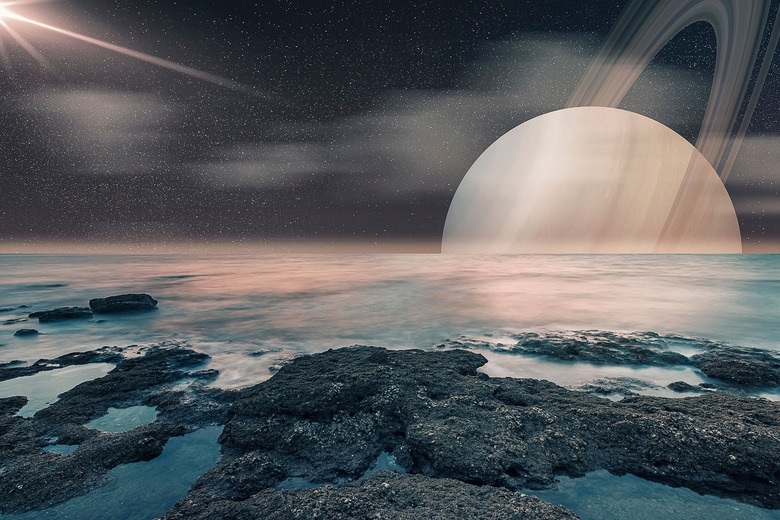Scientists Finally Figured Out How Titan's Magical Islands Float
A new analysis of floating "magic islands" found on Saturn's largest moon, Titan, may actually be glacier-like snow, a new report says. The islands were initially spotted in 2014 by the Cassini-Huygens spacecraft as it observed the orange haze that surrounds Titan.
Despite being discovered nearly ten years ago, it has taken almost a decade for scientists to determine a scientific explanation for these particular islands. Sitting in orbit around Saturn, Titan is bigger than the planet Mercury, and the floating islands appear as bright spots on the moon.
According to the new study which was published in Geophysical Research Letters, Titan's floating islands are indeed real. Further, the islands appear to be physical honeycomb-shaped snow, which forms in the methane lakes that litter the moon's surface.

Of course, other theories have abounded about the islands. But this new research is one of the most intriguing theories, as it posits that the magical islands are actual organics floating on the surface of Titan's methane lakes.
The idea, then, appears to be that these snow-like clumps form on the surface of the methane lakes, eventually sinking into the lakes themselves. It's this floating nature that allows us to see them before they eventually vanish and sink into the boiling methane that they float upon.
While the first glance at Titan's models seemed to suggest that any solids on the surface of the methane lakes would sink immediately, the researchers believe that clumps are likely large and porous, allowing for the methane and ethane to seep in slowly.
This slow seeping would make Titan's magic islands float for a long time, at least long enough for us to see them from so far away. The process, the researchers explain, is similar to what happens when glaciers on Earth break, and pieces float away before sinking.
These floating islands are also part of what makes Titan look like Earth, something astronomers have long puzzled over.
